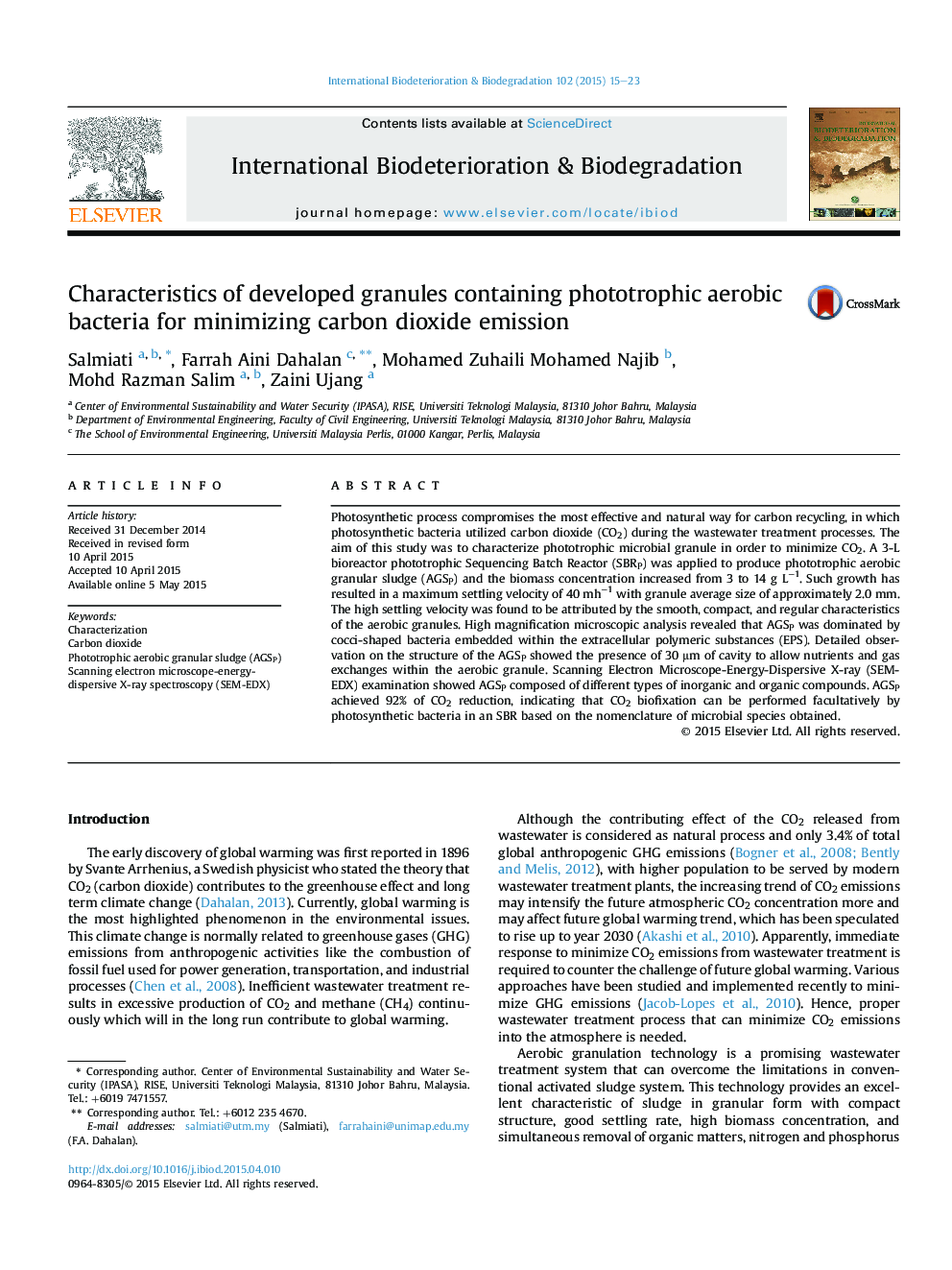| Article ID | Journal | Published Year | Pages | File Type |
|---|---|---|---|---|
| 4364344 | International Biodeterioration & Biodegradation | 2015 | 9 Pages |
•Development of Phototrophic aerobic granular sludge (AGSP) to minimize CO2 emission.•The study provides better understanding on the structure, morphology, and the chemical components present in the AGSP.•The CO2 biofixation can be performed facultatively by photosynthetic bacteria in AGSP.•A successful lab scale, batch study fabrication system was demonstrated.
Photosynthetic process compromises the most effective and natural way for carbon recycling, in which photosynthetic bacteria utilized carbon dioxide (CO2) during the wastewater treatment processes. The aim of this study was to characterize phototrophic microbial granule in order to minimize CO2. A 3-L bioreactor phototrophic Sequencing Batch Reactor (SBRP) was applied to produce phototrophic aerobic granular sludge (AGSP) and the biomass concentration increased from 3 to 14 g L−1. Such growth has resulted in a maximum settling velocity of 40 mh−1 with granule average size of approximately 2.0 mm. The high settling velocity was found to be attributed by the smooth, compact, and regular characteristics of the aerobic granules. High magnification microscopic analysis revealed that AGSP was dominated by cocci-shaped bacteria embedded within the extracellular polymeric substances (EPS). Detailed observation on the structure of the AGSP showed the presence of 30 μm of cavity to allow nutrients and gas exchanges within the aerobic granule. Scanning Electron Microscope-Energy-Dispersive X-ray (SEM-EDX) examination showed AGSP composed of different types of inorganic and organic compounds. AGSP achieved 92% of CO2 reduction, indicating that CO2 biofixation can be performed facultatively by photosynthetic bacteria in an SBR based on the nomenclature of microbial species obtained.
